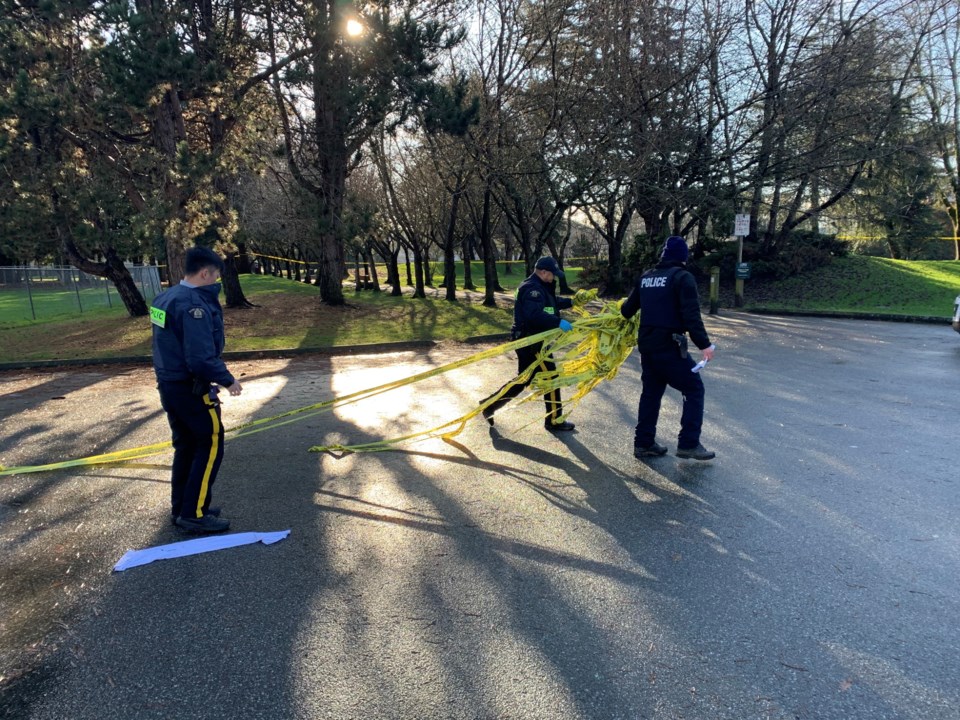Two men were shot dead just three days apart in Richmond — the latest victims in a series of gang-related shootings that have occurred across Metro Vancouver in recent weeks.
Shots were heard in Steveston Community Park near Garry Street and Fentiman Place around 8:30 p.m. on Jan. 7, according to investigators.
Officers arrived on scene to find a man — since identified as 29-year-old Anees Mohammed, a Vancouver resident — with gunshot wounds. He was taken to hospital but later died of his injuries.
Just three days later, shots were fired again in Richmond — this time in City Centre.
Dilraj Johal, who was in his 20s, was found with multiple gunshot wounds in a condo near Lansdowne and No. 3 roads shortly before midnight on Jan. 10. He, too, later died of his injuries in hospital.
Both men were known to police and their shootings are believed to be targeted.
“If you’re a Richmond resident, you’re obviously concerned about this, because it appears that we’ve had this sort of increase in violence in our city, but the reality is that it’s a Lower Mainland issue,” said Dr. Keiron McConnell, who did his PhD on gangs and teaches at Kwantlen Polytechnic and Simon Fraser universities.
As opposed to cities like Toronto, Chicago, or London, UK, where particular neighbourhoods are known for gang violence, gangs in the Lower Mainland are not geographically based.
Here, rather, gang violence is centred on control of drug markets — specifically “the phone that customers call,” said McConnell.
That’s where you see the violence, he said, including the violence that’s emerged in recent weeks, although “personal beefs” and vendettas also play a part, said McConnell, who is also a former Vancouver Police Department (VPD) gang unit member.
Including the two in Richmond, there have been six gang-related shootings in Metro Vancouver over the past two weeks. Five of those shootings have been fatal.
The flare-up appears to have begun in late December 2020, when 19-year-old Harman Singh Dhesi and a 14-year-old boy were killed in Surrey on Dec. 27 and Dec. 28, respectively. Then, in the early morning hours of Jan. 6, 24-year-old gangster Gary Kang was gunned down in his family home in Surrey.
While there are complex investigations that can go on for years before they hit the courts, in the immediate term police can work to suppress the gang violence, said Andy Hobbs, a Richmond resident and retired VPD superintendent who led the creation of that department’s gang task force in the late 2000s.
That can include lawfully stopping and searching gangsters’ cars — and charging them if weapons are found, for example — looking at places where gang members hang out or checking if they are following curfew or other probation or parole conditions.
“If you pay attention and focus on them, you can catch them, and you can start to suppress their activity,” he said.
While Hobbs said he has no doubt that Richmond RCMP and other police jurisdictions are taking gang enforcement “completely seriously,” it’s time to recommit to the issue.
“We have to, again, put more resources, more time, more effort and make this our number one priority right now, because you can’t have people going off in parks shooting guns with straight bullets flying wherever they fly, with no consideration for anybody else, because gangsters don’t care about anybody else,” he said.
Ironically, McConnell, the organized crime expert, said that Richmond is at risk because it’s well policed — which is why gangsters want to live here.
“Gang members want to live in places that have good police as well, because they want to feel safe,” he said.
However, while suppression does restrict gang members’ movements and can serve as a “timeout,” McConnell argued that “when the solution is coming from the police, it’s too late.”
Rather, the focus should be on dealing with young people who are making the choices to join the gangs.
That means putting more resources towards prevention and intervention at the community level — two areas that need to be “more robust than they currently are.”
“We need to be prepared to pay for somebody else’s bill, meaning that…we may not see the benefits of (prevention-intervention) for the next five to 10 years, but we will see it.”



